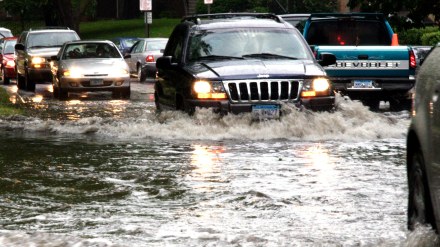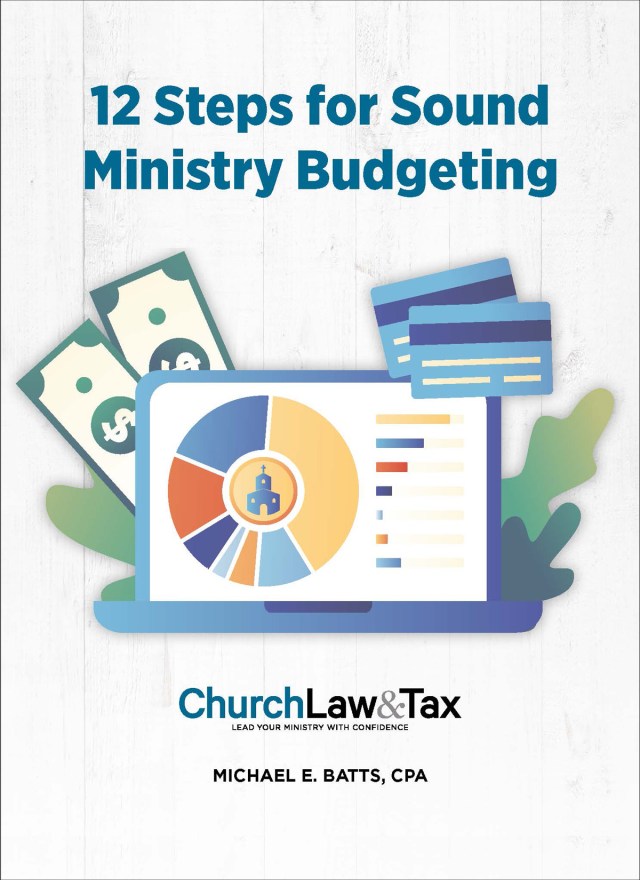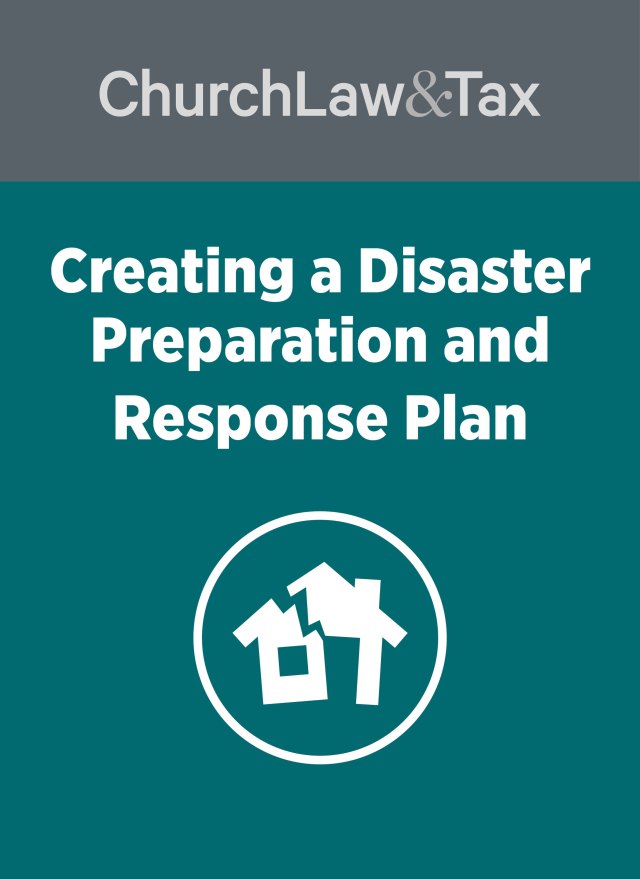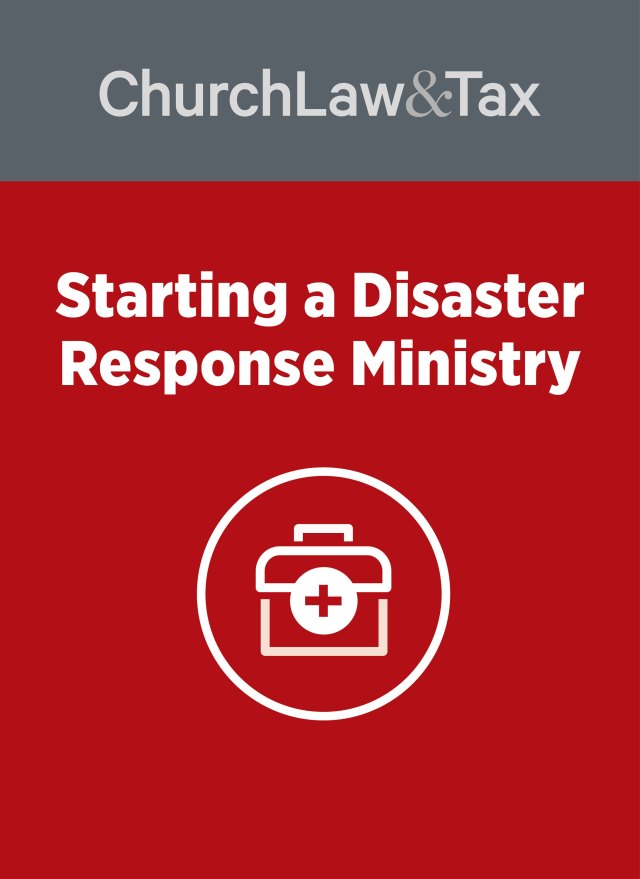Planning a church disaster budget is about being prepared for the unexpected.
For example, you get a call in the middle of the night. A flood has hit your community. Your church building has sustained some minor damage, but many in your congregation and community have sustained significant damage to their homes. They’re wondering where to go, and your church is already receiving phone calls wondering if you’re open for shelter.
What would it cost for your church to open up and provide basic shelter for a night? For a week? For longer? And would you be prepared to provide support services to those in your congregation and community?
When most churches think of “disaster preparedness,” what comes to mind is a lump sum of money raised and then set aside for a literal rainy day. This money collects dust until the day it can be used on building repairs necessitated by storm damage. While such a fund can certainly come in handy for those churches with the resources to support it, I believe that any church can make steps toward preparedness by building preparedness into their budget from the ground up. In fact, I believe this mindset—and the process it takes to work toward it—allows churches to become better versions of themselves before, during, and after an event. This kind of financial preparedness must begin with reframing how your congregation and church leadership—and especially your finance committee—thinks about disaster preparedness.
Don’t just think in terms of a “church disaster budget”
While the idea of setting aside a dedicated disaster reserve may work for a large congregation, most smaller churches find it difficult to set aside money for a future emergency. Rather than thinking about setting aside a lump sum of money, most churches can make steps toward preparedness by building disaster preparedness into their annual budgets. This kind of financial preparedness must begin with reframing how your congregation and church leadership—and especially your finance committee—thinks about disaster preparedness.
Thinking of your “disaster budget” as separate from your regular operating budget can make it difficult to prioritize preparedness—especially when it means relocating funds from another important ministry. It can be tough work, but it’s important for church leaders to dig in and find out how current dollars are spent—and how the prioritization of those dollars could have more ministry impact in the event a disaster strikes. Thinking of this money as part of what it takes to maintain your church’s current ministries can help cast a vision of how your church values and supports the work of these individual ministries and their roles in the community. Increases within each ministry budget line item, specifically for providing funds to those ministries during a potential disaster event, is one practical way to find needed money each year and spread the costs out reasonably across the church.
Advocate by identifying needs
As you advocate for disaster budgeting to your finance committee, it’s helpful to first paint the picture demonstrating the need. Go in prepared, knowing what types of realistic risk your congregation faces as well as the risks your community faces. Don’t just advocate setting aside dollars; have a plan for how you would practically use the money in the event of an emergency.
Initial questions to ask
- What does our insurance cover—and what funds would we need to meet deductibles as well as keep things running while we wait for any claims to get processed and paid? (I go a bit further into insurance-related questions later in this article, too.)
- What would it take to keep our church’s doors open and lights on if the building is still standing after disaster strikes?
- What additional costs would be needed to run the church facility, above and beyond normal operational expenses?
- What dollar amount would you put on each additional cost?
These questions are an important place to start, but think beyond physical repairs, too. Consider how your church would assist people who most need it.
Deeper questions to ask
- What needs are we currently meeting in our congregation? In our community?
- How would we continue meeting these needs in the event of an emergency?
- What dollar amounts would it take to be able to turn areas in our building into a homeless shelter, warming center, dining hall, or food pantry?
Most often, disasters disproportionately affect those who are already more vulnerable, including children, elderly people, chronically ill people, disabled people, and people who are economically unstable. They may not have the resources or ability to adequately prepare for, respond, or recover from a disaster on their own. How can your church prepare to offer them assistance in the event of a disaster?
Know your church’s role
This is also an opportunity to consider your church’s role in the community—or the role you’d like to have. When disaster strikes, people in the community tend to go to churches for assistance, even if they’re not an attender or even a person of faith. They do this because they know that churches are supposed to be a safe place to receive help. By being prepared to respond to disaster, you are reaffirming that your church wants to be a place of refuge for those in your community.
Another way to advocate
Help your finance committee understand how reserve funds could be used to care for existing non-disaster-related needs that, if addressed, would help reduce the impact of disaster. A National Institute of Building Sciences (NIBS) study in 2005 found that every $1 spent on mitigation saves society an average of $4 in future disaster costs, and a 2017 update on that study found “that the return is actually higher than previously thought.” This should encourage you to think creatively about disaster budgeting: money budgeted for preventive or mitigating actions, like repairs on the building, could end up going much further than reactive “rainy day fund” spending. Extending this even further: investing in your community (e.g. helping to reduce poverty) can help reduce the impact of potential disaster while also addressing ongoing needs.
Another way to get buy-in is to talk with other church administrators and leaders who have weathered a disaster in the past. Ask them about what they wish they had known prior to the adversity they faced. Listen for tips, recommendations, and past mistakes they might be able to share with you. Also, be sure to listen not just for important statistics and numbers, but also stories to be able to show how being prepared now can have a major positive benefit on the life of your church in the future should a disaster arise. You need stories, not just the statistics, to get buy-in.
Think creatively
While it can feel impractical or even impossible to set aside large amounts of money in a disaster fund, challenge your finance committee or board to consider places in the budget where a little extra money could be leveraged in the event of a disaster. This will not only make the money go much further; it also will strengthen your current budget needs and will position your church to effectively respond, with its building and other resources, both now and for when it might be needed in the future. For example, say your church has a strong or growing youth ministry.
By building in additional capacity to reach out to and develop relationships with vulnerable youth in your community, you will be well positioned to pivot your existing ministry if disaster strikes. This can work for anything your church does well; shifting your focus from inward-focused programs toward outward-focused needs is an effective form of preparedness as well as a great way to affirm and strengthen the value of your church’s ongoing ministries.
Evaluate where ministry spend is going
Spending time identifying and evaluating how current dollars are being used can help your congregation identify the essential ministries it wants to continue should a disaster strike. Thus, this way of thinking promotes a continuity of operations approach that can be used to strengthen the overall resilience of the church, especially the church’s finances. This can improve the daily functioning of your church, not just during times of disasters.
Think beyond the dollars
Also, as you expand your thinking about disaster budgeting, think beyond just dollars. Consider the other resources that may be available in your congregation. For example, maybe you don’t need to set aside as many dollars specifically for debris removal if you know you have people in your congregation who have the skills, tools, resources, and knowledge to do this work well. Perhaps you could set a plan in place ahead of time with congregation members who might be willing to volunteer or give a discounted rate for such services. You still would likely need funds to be able to assist with debris removal, but it may require much less when you recognize the in-kind resources that you may have access to thanks to your congregation or broader community.
As funds earmarked for disaster go unused, you may be tempted to lower or stop placing additional money into these reserves. But it’s important to regularly reevaluate your budget for inflation and cost-of-living adjustments, as well as any increased risks in your community. What seemed adequate in the past might not be enough in the future, especially as weather-related events continue to rise.
Review your insurance
It’s important for your church to have insurance to cover certain disaster scenarios. A yearly review with your insurance agent on what is and isn’t covered and what else might be needed is important. For example, there are communities that are now at risk of flooding that previously were not. It’s also important to dispel any misconceptions about what is and isn’t covered should disaster strike. A realistic understanding of your coverage will help your finance committee determine true financial need in areas that aren’t fully covered or aren’t covered at all.
TIP As you evaluate insurance and other potential funds, it’s important to understand how to access any available funding through the Federal Emergency Management Agency (FEMA). For a helpful overview, see my article “What Churches Need to Know About the New FEMA Disaster Aid Process.”
Some closing thoughts about buy-in and fundraising
It may seem counterintuitive, but another way to build buy-in for disaster funding and budgeting is by encouraging your church to donate or support other churches or organizations responding to disasters. This can be a great place to start. As your church considers giving to disaster organizations, it also begins to create a culture of preparedness and readiness. It also helps congregation members, as well as the finance committee, see the importance of taking steps toward cultivating resilience, including through your budget, for disaster preparedness.
Through these acts of altruistic giving, not only is your church helping others, but by doing so, it helps the congregation develop new skills and raises awareness about the need to prepare, which makes getting the overall buy-in easier both among leaders and members.
Raise awareness in the community
When it comes to fundraising, consider a special event to raise awareness about disasters in your community and create opportunities for giving for preparedness efforts. It may also be helpful to look to your denomination or donors that may have a particular interest in funding church preparedness activities and recovery efforts. The Federal Emergency Management Agency (FEMA) and the Department of Homeland Security have also offered grants in the past to help strengthen the security of houses of worship, so be on the lookout for opportunities to procure dollars for effective mitigation strategies.
It’s important to remember that, as with most things in life, a little bit of energy and money spent on preparedness goes much further than what it takes to figure out solutions after a disaster hits.
Dr. Jamie D. Aten is a disaster psychologist and the founder and executive director of the Humanitarian Disaster Institute (HDI) at Wheaton College in Illinois. HDI recently launched a new MA in Humanitarian & Disaster Leadership at Wheaton College Graduate School. Jamie’s latest books include the Disaster Ministry Handbook and Spiritually Oriented Psychotherapy for Trauma . You can follow Jamie on Twitter at @drjamieaten or visit his website.
For additional information, see these articles and downloadable resources:





